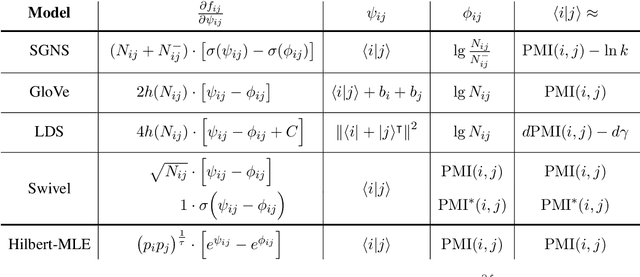Deconstructing and reconstructing word embedding algorithms
Paper and Code
Nov 29, 2019



Uncontextualized word embeddings are reliable feature representations of words used to obtain high quality results for various NLP applications. Given the historical success of word embeddings in NLP, we propose a retrospective on some of the most well-known word embedding algorithms. In this work, we deconstruct Word2vec, GloVe, and others, into a common form, unveiling some of the necessary and sufficient conditions required for making performant word embeddings. We find that each algorithm: (1) fits vector-covector dot products to approximate pointwise mutual information (PMI); and, (2) modulates the loss gradient to balance weak and strong signals. We demonstrate that these two algorithmic features are sufficient conditions to construct a novel word embedding algorithm, Hilbert-MLE. We find that its embeddings obtain equivalent or better performance against other algorithms across 17 intrinsic and extrinsic datasets.
 Add to Chrome
Add to Chrome Add to Firefox
Add to Firefox Add to Edge
Add to Edge